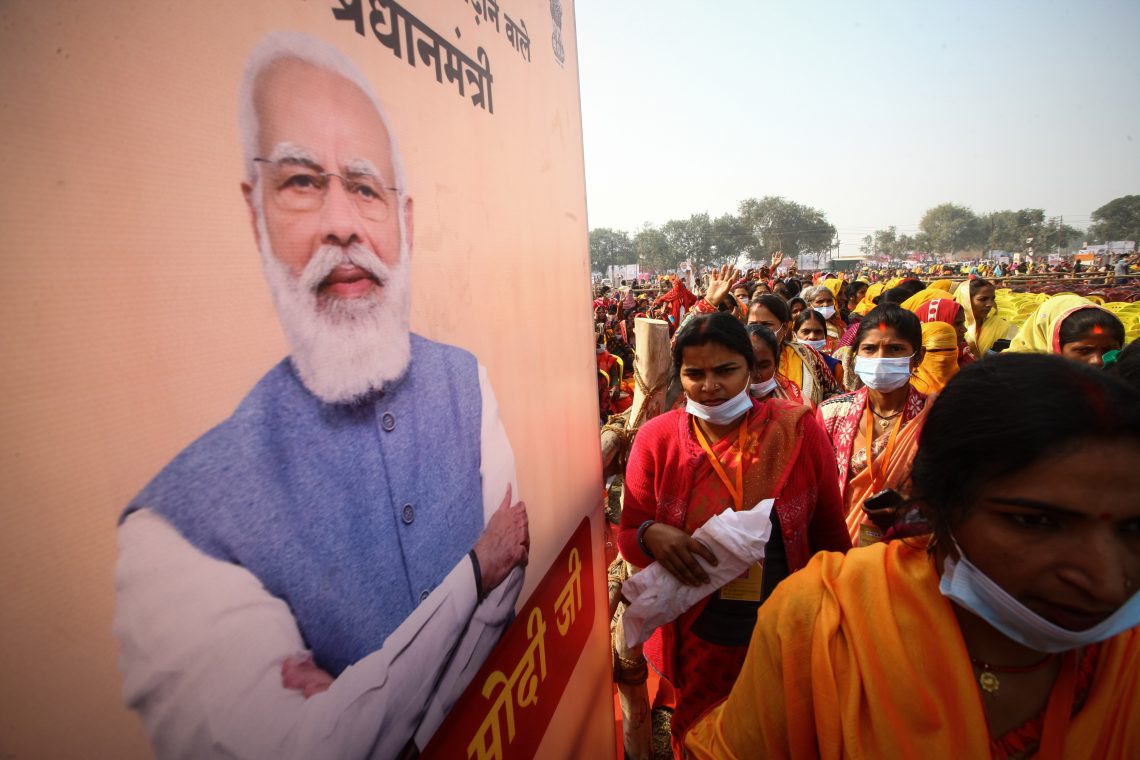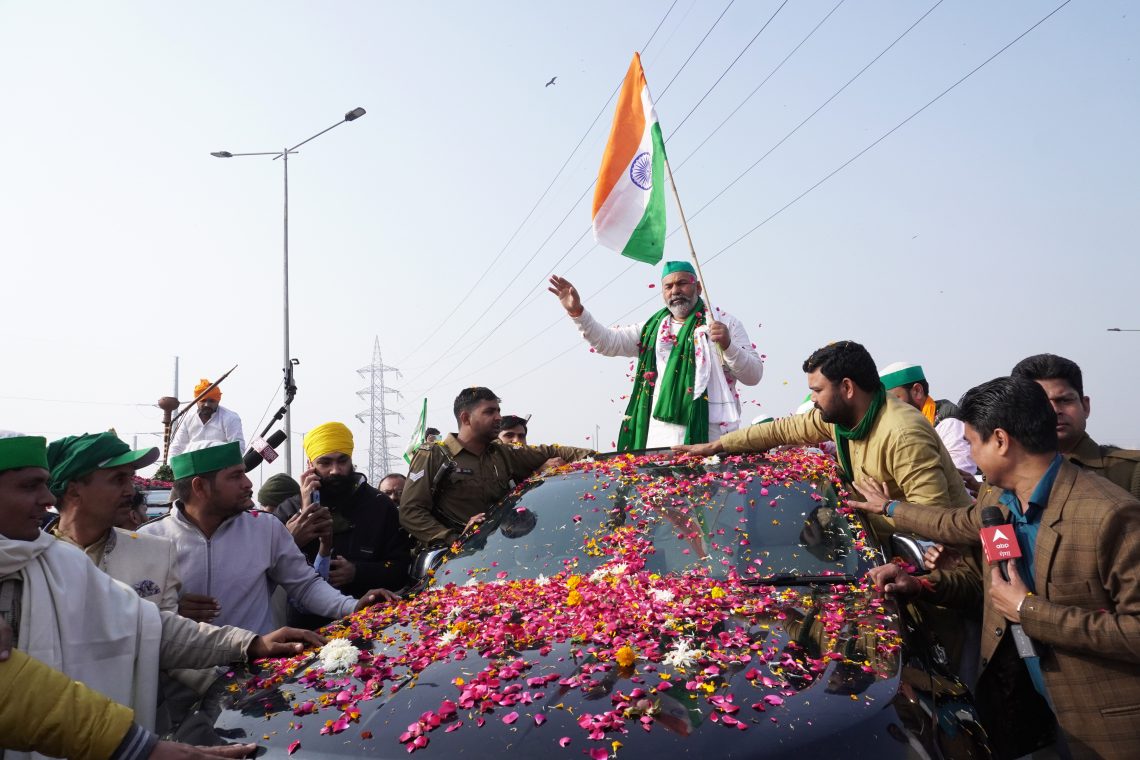Modi pulls back on agrarian reforms
Indian Prime Minister Narendra Modi unexpectedly repealed three landmark agricultural bills after a year of protests by grain farmers, but once key elections are over, he could make another attempt at reform.

In a nutshell
- India’s agricultural reform is being rolled back
- Prime Minister Modi needs votes in targeted states
- The situation could change after important elections
In a surprise move, Indian Prime Minister Narendra Modi announced in November 2021 the repeal of three landmark agricultural reform bills after a year of protests by grain farmers in northwest India. Until then, the head of government had rolled back only one piece of legislation since he came to power, and that was in 2015, just a year into his first term. The decision sent tremors through the Indian political system. The prime minister’s political standing and commitment to economic reforms are now under question. The repeal also raised fears that no Indian government would ever be powerful enough to undo the fiscally and environmentally unsound agrarian system of that corner of India.
Farm laws
In 2021, Prime Minister Modi passed three farm bills with the intention of freeing up the tightly regulated market for rice and wheat. The most important element was an end to a requirement that much of the grain produced be bought by government agencies at above-market prices. One bill, for example, allowed for direct contract farming with private firms. Another shifted control of state-level farm marketing boards to the central government, with the ultimate goal of sidelining them.
The government used its majority in parliament to push the bills through, disallowing debate and avoiding any consultations with stakeholders. Thousands of farmers from Punjab, Haryana and the western part of Uttar Pradesh, the main beneficiaries of the existing agricultural system, launched protests that included the blockades of many roads leading to New Delhi. A year-long stalemate ensued. The farmers, largely from the wealthy and well-organized Jat caste, failed to get other social groups to support them. The government proved unable to divide the farmers or get them to accept anything short of complete repeal. The two sides are now holding talks and seem set to send other outstanding issues to a committee.
There is a consensus that the overall goal of the farm laws was sensible.
The Modi government’s walk back seems to have been primarily driven by electoral concerns. Uttar Pradesh, the country’s largest state, will hold elections in phases through February and early March. Retaining control of this state is a political necessity for the prime minister and internal polling was showing the race tightening, in part because of the farm protests. The security apparatus had also sounded the alarm as the stalemate dragged on, claiming extremists, including Sikh separatists and Islamicist militants, had begun infiltrating the protest movement. There were also concerns that the protests were becoming a lightning rod for other disaffected groups, threatening the carefully constructed social coalition that has kept Mr. Modi in power. Much of this is a fallout of the social and economic damage inflicted by the Covid pandemic: the number of Indians below the poverty level more than doubled between 2020 and 2021.
Subsidy trap
There is a consensus that the overall goal of the farm laws was sensible. The Green Revolution that made India self-sufficient in grain has become an economic liability. The northwest farming belt that benefited the most has become one of the country’s most entrenched and powerful political lobbies. The farmers use this clout to ensure subsidized water, power and fertilizers. They also got the government to guarantee purchases of their crops at generous prices.
The consequence, familiar to all countries with powerful farm lobbies, is mountains of wheat and rice priced too high to export, which cost the government billions of dollars to store and often end up being wasted. One subsidiary effect is excessive stubble in the fields that, when burnt, leads to air pollution in north Indian cities. The Food Corporation of India, one of the government agencies mandated to buy the produce, on average holds 50 million tons of surplus rice and wheat and last year racked up a debt of $51 billion. These extravagant farming practices are also causing alarming levels of soil erosion and water depletion.

Prime Minister Modi’s immediate battle was to beat off attempts by the protest leaders to expand their demands. They called on the government to cancel plans to privatize banks and end attempts to introduce market prices for electricity. These requests have elicited little public support, and by year-end, the farm leaders had given them up. However, the call for agricultural support prices to be written into law and expanded to include more crops will be more difficult to ignore. These are popular with farmers in general but would only exacerbate the existing dysfunctionality of the agrarian system. Some estimates say conceding to this demand would roughly double the government’s subsidy burden. The Modi administration has maneuvered to have this handed to a panel of farm leaders and agricultural experts so that the whole issue will die a slow death.
Scenarios
The worst-case scenario would be a complete governmental surrender going beyond the repeal of the three laws. This cannot be ruled out if the Uttar Pradesh elections go disastrously wrong. The most destructive concession would be to further entrench and expand the price support system. Some related demands, such as canceling electricity pricing reform, would make it impossible for India to attract the billions of dollars of investment it needs to carry out its green energy transition. Such a degree of submission would effectively mean the end of the Modi government as a driver of change and the beginning of the general election campaign, two years before they need to be held.
The best-case scenario would be for the government to treat this as a tactical retreat and resume market reforms once the Uttar Pradesh elections are over next year. The election calendar is largely blank for the 12 months that follow, giving the government one last window to push more legislation through the system before the election campaigns. With two of the three states at the heart of the farmers’ agitation not heading to the polls for another five years, Mr. Modi could even consider restarting the debate on agrarian reform again.
Several reformers have proposed breaking up the farm legislation into smaller, more palatable chunks. Prime Minister Modi’s party already rules Uttar Pradesh and Haryana and could consider reintroducing the reforms at this level. State governments have the right to introduce contract farming and abolish marketing boards on their own – and they have done so in other parts of the country.
What is most likely to happen is the Modi government moving ahead on the economy but with a more limited agenda. The farm reforms will probably have to wait for a possible third Modi term. No one has the stomach for the sweeping changes needed to wean northwest farmers off their subsidized overproducing ways. If the Bharatiya Janata Party is able to secure a victory in Uttar Pradesh next year, the electricity reforms will be back on the table. The government has indicated it will continue privatization even within the current fiscal year.
The repeal of the farm laws and the government’s recent populist moves, like reducing fuel taxes, indicate the economic damage of the pandemic have eroded Prime Minister Modi’s political confidence and appetite for radical action. It can be assumed the government will shift to a more cautious policy agenda in the two years before the next national elections.








